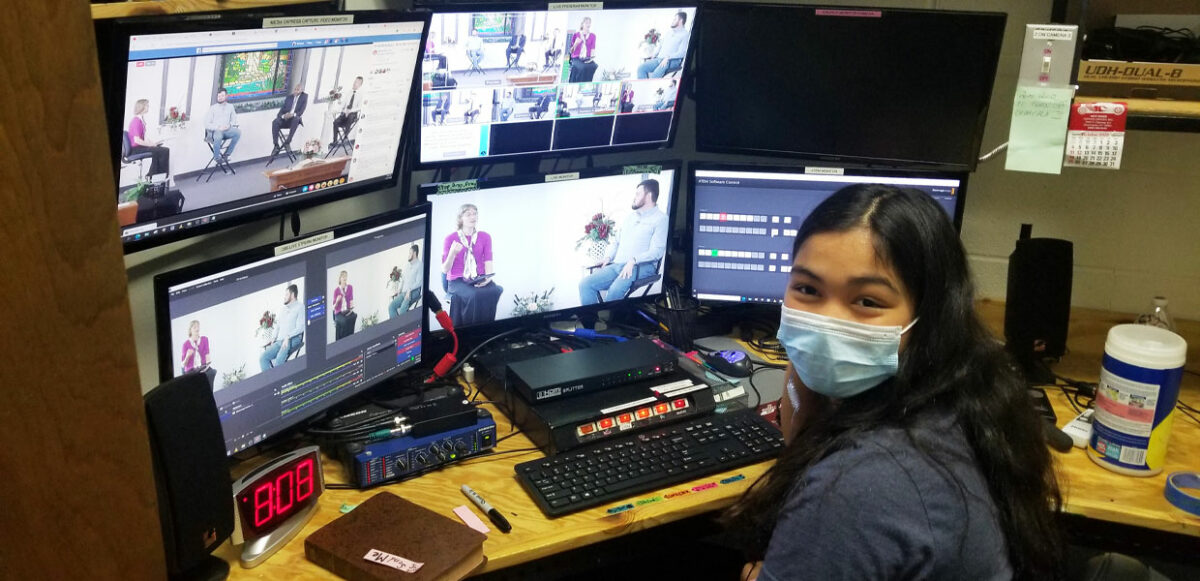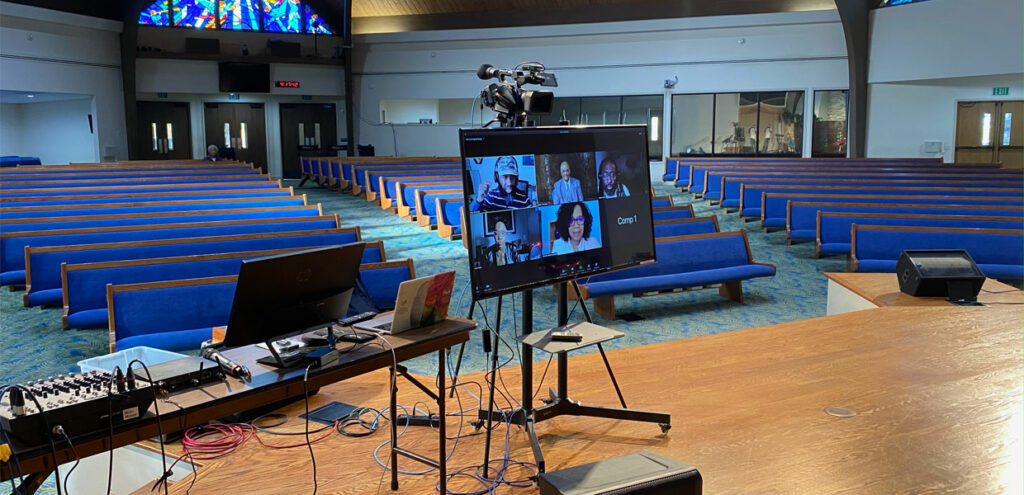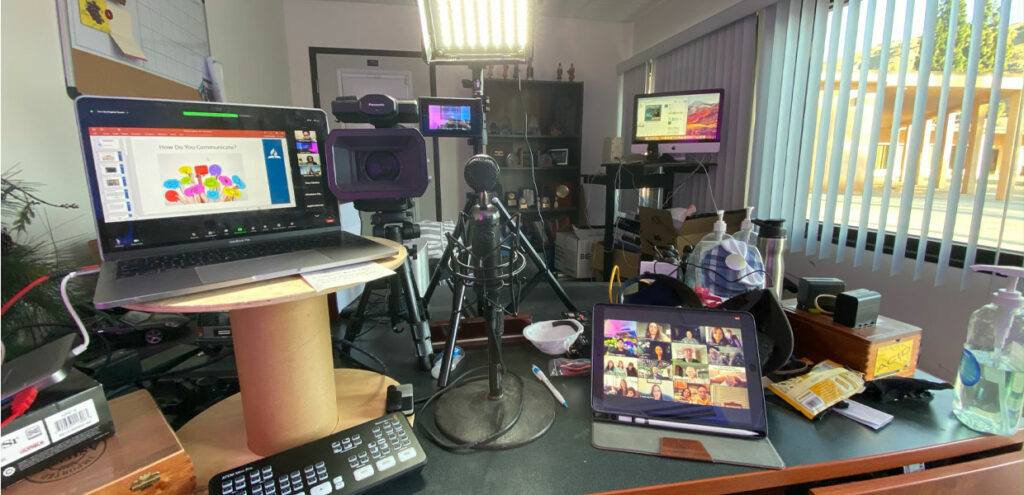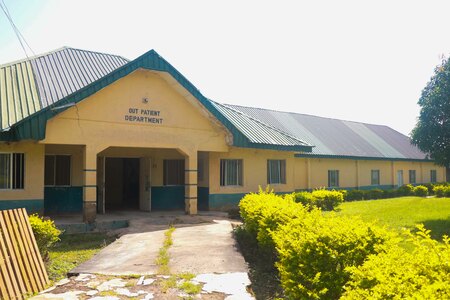Media and technology ministries spread God’s message effectively.

“Write the vision and make it plain on tablets, that he may run who reads it” (Habakkuk 2:2, NKJV).
These were the instructions given to the prophet Habakkuk. Prophets received messages from God, and they were to speak the message, “Thus saith the Lord” (see Ezekiel 25:1-3, 8, 15). The delivery of the message was audible.
But God told Habakkuk to write, not speak the message given to the him as a vision. This vision that he should write was not dictation; it was like a cinematic movie played out before him in surround sound. Visualizations create permanent records just as written documents do.
The Role of Visual Aids
Historically, visual aids have been used to present the message to the people. We have the patriarchs and prophets of old who used various items as visual stimulants in presenting the message. Moses used a rod, and that rod turned into a serpent before the eyes of Pharaoh. And he used a rod to part the Red Sea. Noah built an ark. As he preached about the world’s doom, he showed them a visual of their salvation.
Jesus also used visuals as He was telling the parables. While He was talking, He would point to the sower spreading seeds. He waited until after the disciples had fished all night and then used their net to teach an evangelistic lesson.

A picture burned into the mind of the receiver stays with them. As Habakkuk 2:1 states, “I will stand upon my watch, and set me upon the tower, and will watch to see what He will say unto me, and what I shall answer when I am reproved.”
Note the position of the prophet: “Set me upon the tower,” watching to see what will be said. Habakkuk was not awaiting an audible response from God but rather a visual one: “I will watch to see what He will say unto me.” And this was a first for the prophet: to show and not speak the message. “Write my answer on a billboard, large and clear, so that anyone can read it at a glance and rush to tell the others” (v. 2, TLB).
This passage of Scripture is a biblical forerunner to multimedia ministry. In our day, the instruction to write the vision and make it plain is a task that has been given to a dedicated group of media technologists who, for the most part, are unknown and invisible. Church members know they exist, but few know their names, and even less than that, know what they do. There is a T-shirt that explains this reality perfectly — “Nobody knows what I do until I don’t do it.”
From Obscurity to Light
This church ministry group — media/technology — operated pretty much in obscurity until the pandemic. While many churches, ministries, and organizations panicked and scrambled, this group exemplified the ol’ saying, “Cream always rises to the top.” At this time, their gifts and talents, coupled with their knowledge of what to do, alongside their skill set of how to do it, enabled the ministry to continue.
In a season that many feared would be a desert/wilderness experience for the religious community, churches flourished because of their media/technology ministries. The media teams made sure weekly services were broadcasted. They used the modern media to accomplish the task.
For the churches that were broadcasting online before the pandemic, they continued. For those that were not, many started with Zoom, while others launched out and enhanced the member experience by using various platforms, like StreamYard (streamyard.com) and Ecamm (ecamm.com). Those who didn’t use the tier-one or tier-two platforms, yet wanted to broadcast on multiple online channels, used Restream, which allowed their viewing audiences of Facebook and YouTube to participate in the service.
Some ministries took it to another level and used Altar Live (altarlive.com), which allowed members to be greeters and hosts to those attending or visiting. It also gave them the ability to virtually seat the person with family or friends at a table where further interaction during the worship service could take place.
The pandemic not only produced new platforms like evmux (evmux.com) that the teams could test and adapt to use for service, but it also gave birth to new ministries. Kirk Nugent went live on Friday night just talking, and friends joined. What started as one person just talking became a weekly occurrence known as Friday Night Live or the Café Crew, which is a group of creatives who gather in fellowship to challenge, encourage, mentor, and sponsor other creatives.
Connection with Member Care
Attentiveness, or, in church language, member care, is a priority. It is a common occurrence for someone to share a testimony or prayer request, and someone places in the chat “cash app,” which is a signal for Kirk or one of the other guests to request the person’s Cash App ID, to which the community gives. It’s an amazing sight to see the person’s face light up as they hear the chimes and chings of their mobile device as monetary gifts are received. One person called for the offering to bless another, and the community of believers responded.
There have been virtual baby blessings for attendees who had children during the pandemic. Another outgrowth of the pandemic is a Sabbath afternoon show. Anslem Paul, pastor of North Lauderdale church in Fort Lauderdale, Florida, says this: “The creators and hosts of The Pastors Round Table are three pastors from the Southern Union. Through open and frank weekly conversations with special guests, they seek to help inspire conversations and ideas that will help bridge gaps between mission and structure while creating content that helps denominational leaders, pastors, local church leaders, and members keep ministry relevant, resourceful, and real.”
Other Initiatives
Three pastors in the Kentucky-Tennessee Conference joined together and created the Middle Kentucky Adventist Fellowship. Jon Remitera, pastor, originally had the idea to start a daily devotional on Facebook. After talking with fellow pastors Tom Kyser and Daniel McFeeters, it grew to the publication of 30-minute devotional thoughts.
Paola Mora Zepeda, communication director of the Kentucky-Tennessee Conference, shared this from Remitera: “That provided a space for our church members, during the pandemic, to find community.”

A little while later, three additional pastors joined, and they alternated giving the devotionals. They added a weekly vespers service as the fellowship grew, and conducted a revival series. McFeeters points out that church members saw themselves as part of something bigger than just one local church. “Through technology we can work synergistically; we can accomplish more together than we can separately,” Remitera said.
In Spartanburg, South Carolina, the Spartanburg Spanish church began an online children’s program, where they offered a 12-week Bible study course. And just as the Bible says, “My word will not return unto Me void,” 11 children were baptized. The celebration stirred the church to continue to focus on the children and expand the programming. Now, they have an international audience with viewers from the Caribbean and Central and South America.
God and Media
The new ministries and acknowledgment of the media/tech teams remind us that God is progressive in His use of available resources to communicate His message to humanity.
Before humanity’s fall, humans enjoyed the privilege of face-to-face communication with God and angels. Ellen G. White writes about this privilege Adam and Eve once had. “The happy pair greeted with joy the visits of their Creator, as in the cool of the day He walked and talked with them. Daily God taught them His lessons” (The Ministry of Healing, 261). Although communication with the Divine was then face to face, because of sin that form of communication is no longer possible. God therefore makes use of the current resources.
History reveals that God has been progressive in using the available resources. He has desired to communicate with humanity. The Old Testament is replete with visual methods. Technology that God used includes the GPS-guided cloud by day and fire by night, voice-activated water fountain, kinetic river divider. And, in probably the greatest of biblical technology, the Urim and Thummim — you ask a question and precious stones would light up to give you a yes or no answer.
God understood the times in which people lived and used what was available to reveal Himself to them. He met them where they were and communicated on their level. “Christ always used the contemporary tools of His time to reach people, be it drawings in the sand or other culturally relevant imagery — like shepherds and lambs, or fishermen and fish that supported His message,” author David Rauch says.
We owe gratitude to the media/technology teams in our churches. While many sat in the comfort of their home, the teams feverishly worked to communicate the gospel. God is progressive in His use of technology, and so should the church be.
Hmm, “Write the vision, and make it plain upon tablets.” Could it be that God looked into the 21st century and said, “Use an iPad”?
Bryant Taylor is the associate communication director at the Southern Union Conference.








